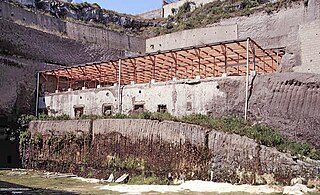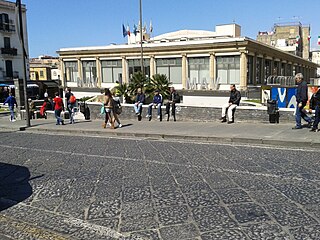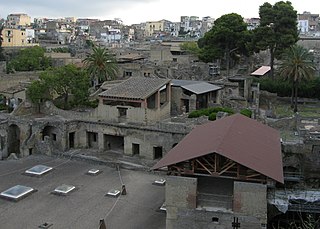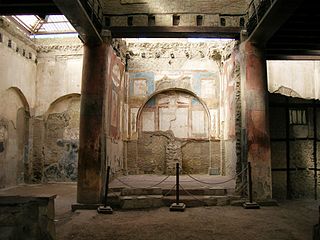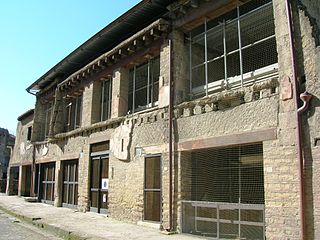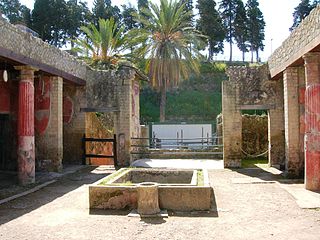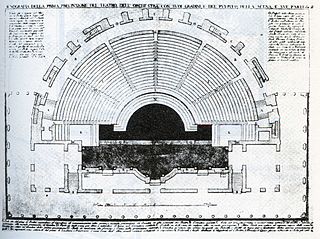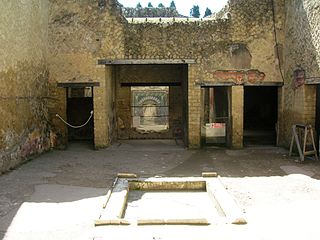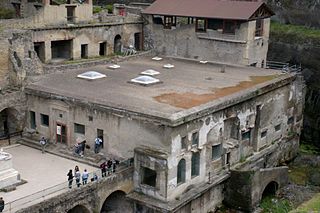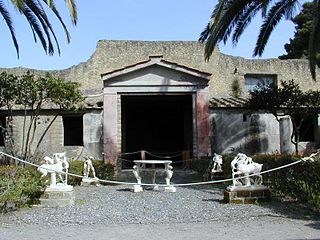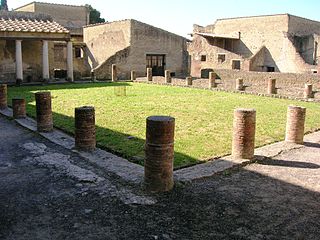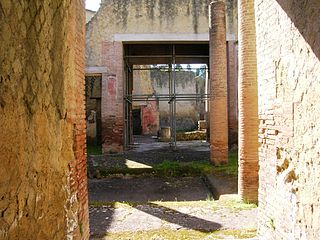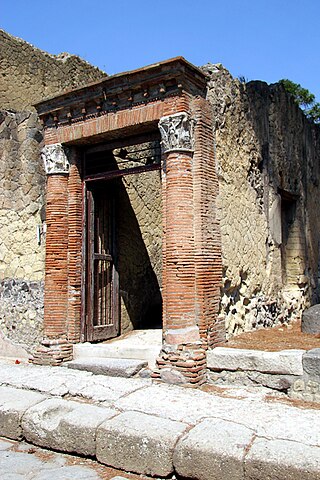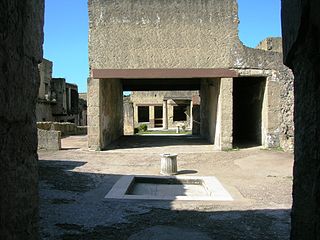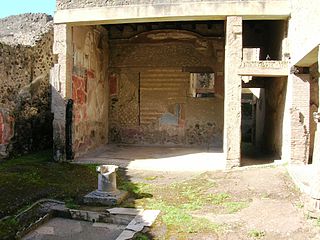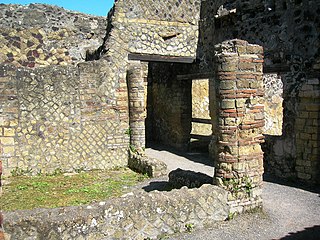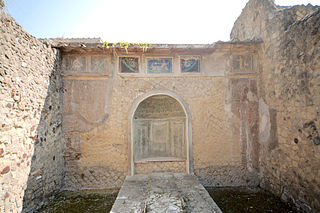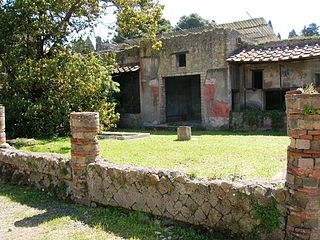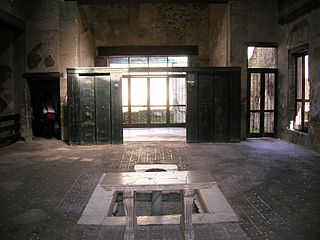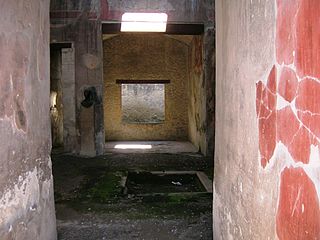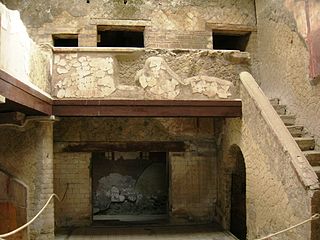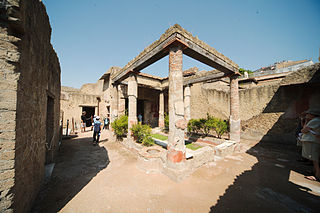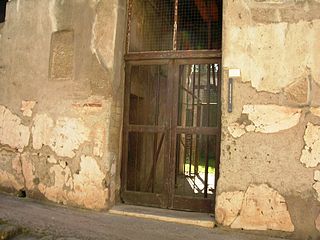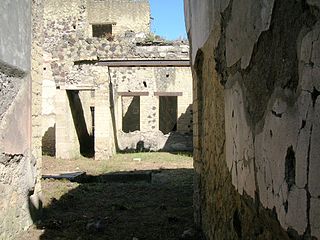25 Sights in Ercolano, Italy (with Map and Images)
Legend
Welcome to your journey through the most beautiful sights in Ercolano, Italy! Whether you want to discover the city's historical treasures or experience its modern highlights, you'll find everything your heart desires here. Be inspired by our selection and plan your unforgettable adventure in Ercolano. Dive into the diversity of this fascinating city and discover everything it has to offer.
Sightseeing Tours in ErcolanoActivities in Ercolano1. Villa dei Papiri
The Villa of the Papyri was an ancient Roman villa in Herculaneum, in what is now Ercolano, southern Italy. It is named after its unique library of papyri scrolls, discovered in 1750. The Villa was considered to be one of the most luxurious houses in all of Herculaneum and in the Roman world. Its luxury is shown by its exquisite architecture and by the large number of outstanding works of art discovered, including frescoes, bronzes and marble sculpture which constitute the largest collection of Greek and Roman sculptures ever discovered in a single context.
2. MAV Museo Archeologico Virtuale di Ercolano
The virtual archaeological museum, also known by the acronym of MAV, is an archaeological-virtual museum, located in Herculaneum, a few steps from the archaeological excavations, which tells the life of the Roman cities at the foot of Vesuvius, just before the eruption of 79: it is, of its kind, one of the most important in the world.
3. Real Osservatorio Vesuviano
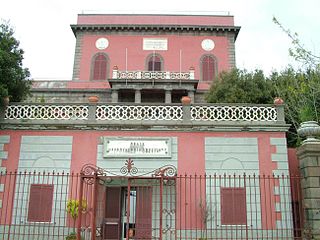
The Vesuvius Observatory is the surveillance centre for monitoring the three volcanic areas of Campania, Italy: Mount Vesuvius, the Phlegrean Fields and Ischia. Founded in 1841 on the slopes of Mount Vesuvius by Ferdinand II of Bourbon, King of the Two Sicilies, it is the oldest volcanology institute in the world. Its current operative center is based in Naples, hosting an important section of the National Institute of Geophysics and Volcanology.
4. House of the Gem
The House of the Gem is a Roman house, buried during the eruption of Vesuvius in 79 and brought to light following the archaeological excavations of ancient Herculaneum: it is so called because of the discovery inside of a jewel, dating back to the age of Claudius, on which Livia's face is engraved.
5. College of the Augustales
The College of the Augustales is a religious building of the Roman era, buried during the eruption of Vesuvius in 79 and found following the archaeological excavations of ancient Herculaneum: inside, probably, the priestly college of the Sodales Augustales met.
6. House of the Bicentenary
The Bicentennial House is a Roman house buried during the eruption of Vesuvius in 79 and found following the archaeological excavations of ancient Herculaneum: the name derives from its discovery exactly two hundred years after the beginning of the first discoveries of Herculaneum.
7. House of the Telephus Relief
The house of the Relief of Telephus is a Roman house, buried during the eruption of Vesuvius in 79 and brought to light following the archaeological excavations of ancient Herculaneum: it is so called because a high relief depicting the myth of Telephus was found inside.
8. Teatro romano di Ercolano
The Herculaneum Theatre is a theatre in the city of Ancient Rome of Herculaneum. Since 1997 it has been part of the World Heritage Site called "Archaeological Zones of Pompeii, Herculaneum and Torre Annunziata".
9. House of Neptune and Amphitrite
The house of Neptune and Amphitrite is a Roman house, buried during the eruption of Vesuvius in 79 and brought to light following the archaeological excavations of ancient Herculaneum: it is so called because inside it preserves a mosaic depicting Neptune and Amphitrite.
10. Suburban Baths
The Suburban Baths are a thermal complex from Roman times, buried by the eruption of Vesuvius in 79 and found following the archaeological excavations of ancient Herculaneum: they are one of the best preserved thermal buildings of their kind in the entire Roman Empire.
11. House of the Stags
The house of the Deer is a house from Roman times, buried during the eruption of Vesuvius in 79 and found following the archaeological excavations of ancient Herculaneum: it is so called because of the discovery, in the garden, of two statues of deer attacked by dogs.
12. Central Baths
The Baths of the Forum are a thermal complex from Roman times, buried by the eruption of Vesuvius in 79 and found following the archaeological excavations of ancient Herculaneum: they are so called because of their proximity to the city's forum.
13. House of the Two Atria
The house of the Two Atriums is a Roman house, buried during the eruption of Vesuvius in 79 and brought to light following the archaeological excavations of ancient Herculaneum: it is so called because of the presence inside of two atriums with impluvium.
14. House of the Grand Portal
The house of the Great Portal is a Roman house, buried during the eruption of Vesuvius in 79 and found following the archaeological excavations of ancient Herculaneum: it is so called because of the entrance portal decorated with semi-columns with capitals adorned with Victories.
15. House of the Black Salon
The house of the Black Hall is a house from the Roman era, buried during the eruption of Vesuvius in 79 and brought to light following the archaeological excavations of ancient Herculaneum: it is so called because of an oecus totally frescoed in black.
16. House of the Tuscan Colonnade
The house of the Tuscan Colonnade is a Roman house, buried during the eruption of Vesuvius in 79 and found following the archaeological excavations of ancient Herculaneum: it owes its name to the Tuscan-type colonnade present in the peristyle.
17. House of the Alcove
The Alcove House is a Roman house, buried during the eruption of Vesuvius in 79 and found following the archaeological excavations of ancient Herculaneum: it is so called because of an apsidal environment, called an alcove.
18. House of the Skeleton
The House of the Skeleton is a house from Roman times, buried during the eruption of Vesuvius in 79 and found following the archaeological excavations of ancient Herculaneum: it owes its name to the discovery of a human skeleton inside.
19. House of the Mosaic Atrium
The House of the Mosaic Atrium is a Roman house, buried during the eruption of Vesuvius in 79 and found following the archaeological excavations of ancient Herculaneum: it is so called because of the atrium which has a mosaic floor.
20. House of the Wooden Screen
The house of the Wooden Partition is a Roman house, buried by the eruption of Vesuvius in 79 and brought to light following the archaeological excavations of ancient Herculaneum: it owes its name to the discovery, inside, of a partition, a sort of folding door in charred wood.
21. House of the Bronze Herm
The House of the Bronze Herm is a Roman house, buried during the eruption of Vesuvius in 79 and found following the archaeological excavations of ancient Herculaneum: it is so called because of the discovery inside of a bronze herm depicting a man.
22. House of the Beautiful Courtyard
The house of the Bel Cortile is a house from Roman times, buried by the eruption of Vesuvius in 79 and found following the archaeological excavations of ancient Herculaneum: it owes its name to its perfectly preserved courtyard.
23. House of the Corinthian Atrium
The house of the Corinthian Atrium is a house from the Roman era, buried by the eruption of Vesuvius in 79 and found following the archaeological excavations of ancient Herculaneum: it is so called because of the columns of the atrium, with a capital in the Corinthian order.
24. House of the Wooden Furniture
The House of Carbonized Furniture is a house from the Roman era, buried by the eruption of Vesuvius in 79 and brought to light following the archaeological excavations of ancient Herculaneum: it is so called because charred furniture was found inside it by the effect of pyroclastic flows.
25. House of the Wooden Shrine
The house of the Wooden Sacellum is a Roman house, buried by the eruption of Vesuvius in 79 and found following the archaeological excavations of ancient Herculaneum: it owes its name to the discovery of a small wooden cabinet.
Share
How likely are you to recommend us?
Disclaimer Please be aware of your surroundings and do not enter private property. We are not liable for any damages that occur during the tours.
